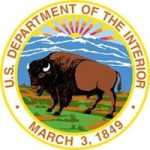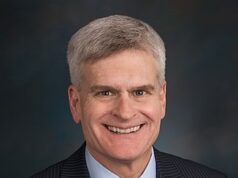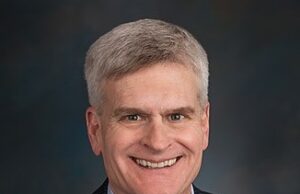Vice President Pence and Secretary Bernhardt Highlight the Need for Bipartisan Fix to National Parks Infrastructure at Yellowstone

Yellowstone National Park, Wyo. – (RealEstateRama) – Vice President Mike Pence and U.S. Secretary of the Interior David Bernhardt visited Yellowstone National Park to renew the Trump Administration’s call for bipartisan legislation to fix infrastructure at National Parks. Along with Mrs. Pence and Yellowstone Superintendent Cam Sholly, Vice President Pence and Secretary Bernhardt joined a National Park Service (NPS) maintenance crew to rebuild the boardwalk at the iconic geyser Old Faithful. During peak season, the boardwalk allows thousands of visitors to see the geyser up close on a daily basis.
“I thank Vice President Pence for visiting Yellowstone National Park today to assist the park on a deferred maintenance project and to reaffirm the Trump Administration’s unwavering commitment to address our crumbling park infrastructure,” said Secretary Bernhardt. “Our National Parks need more than $12 billion to repair aging infrastructure due to decades of inaction, and we are calling on Congress to support on a bipartisan basis the Trump Administration’s proposal to address this vital need. It’s time to act.”
While at Yellowstone, Vice President Pence and Interior Secretary Bernhardt spoke to approximately 120 employees and partners, and received briefings from NPS employees on the subjects of deferred maintenance, forest management and wildfire, and Yellowstone’s unique geology and wildlife.
National Parks utilize an incredible amount of infrastructure to service more than 300 million visitors annually. The appropriations associated with maintaining this infrastructure are not being sustained as the NPS currently has a deferred maintenance backlog of more than $12 billion. Yellowstone National Park comprises of approximately $500 million of this total.
In order to maintain our National Parks and public lands, the Trump Administration via the Department of the Interior (DOI) included a legislative proposal in the FY2019 budget that called for the creation of a Public Lands Infrastructure Fund. This fund would establish a dedicated revenue stream generated from federal energy leases and royalty payments (all forms of energy, solar, wind, coal, oil, gas, biomass, geothermal, etc.) to fix infrastructure and maintenance projects in National Parks and on other public lands. Bipartisan legislation was introduced in both chambers, but ultimately a consensus was not reached before the end of last session. The DOI re-proposed the PLIF in the FY2020 budget.
Background
National Park Service Infrastructure Snapshot:
- 10,830 miles of paved roads
- 6,544 miles of unpaved roads
- The equivalent of 948 paved miles of parking lots
- 1,679 bridges, culverts, and tunnels
- 1,200 water systems
- 1,600 wastewater systems
- 400 electrical systems
- 14,000 miles of trails both paved and unpaved
- 1,900+ campgrounds with 14,530 camp sites containing more than 2,300 bridges and tunnels; and 4,853 picnic sites
- 22,849 buildings (visitors centers, restrooms, gift shops, lodging, cafeterias, administration, public safety, etc)
- 5,112 housing units
Yellowstone Infrastructure Snapshot:
- Five park entrances
- 466 miles of road
- More than 15 miles of boardwalk
- Approximately 1,000 miles (1,609 km) of backcountry
- Eleven visitor centers, museums, and contact stations
- Nine hotels/lodges (2,000+ hotel rooms/cabins)
- Seven NPS-operated campgrounds (450+ sites)
- Five concession-operated campgrounds (1,700+ sites)
- More than 1,500 buildings
Economic Impact of National Parks
National Parks are great contributors to our nation’s economy; supporting a historically low unemployment rate of 3.6%, which is the lowest the unemployment rate has been since 1969.
According to the annual National Park Service report, 2018 National Park Visitor Spending Effects, more than 318 million visitors spent $20.2 billion in communities within 60 miles of a park in the National Park System. Of the 329,000 jobs supported by visitor spending, more than 268,000 jobs exist in the park gateway communities.
Yellowstone National Park had 4.1 million park visitors who spent an estimated $513 million in local gateway regions. These expenditures supported a total of 7,090 jobs, $224 million in labor income, $375 million in added-value, and $647 million in economic output in local gateway economies surrounding the park.
###
Contact:

















